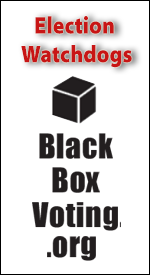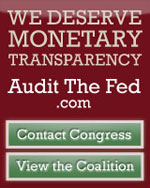Video: Trust WHO? Clandestine Influences Revealed
By Dr. Joseph Mercola
STORY AT-A-GLANCE
- “TrustWHO,” a documentary film produced by Lilian Franck, delves into the corruption behind the World Health Organization
- Industry influences, from Big Tobacco to the nuclear industry and pharmaceuticals, dictated WHO’s global agenda from the start; WHO’s 2009 H1N1 pandemic response was heavily influenced by the pharmaceutical industry
- WHO works closely with the International Atomic Energy Agency (IAEA), a promotor of the nuclear industry, and has downplayed health effects caused by the Chernobyl and Fukushima nuclear disasters
- WHO’s investigation into COVID-19’s origins is corrupt, as China was allowed to hand pick the members of the WHO’s investigative team, which includes Peter Daszak, Ph.D., who has close professional ties to the Wuhan Institute of Virology (WIV) that was being investigated
- The Bill & Melinda Gates Foundation was the biggest funder of WHO when Donald Trump stopped U.S. funding, making Gates’ priorities the backbone of WHO
Given the strong and ongoing evidence that WHO is heavily influenced, if not outright controlled, by Bill Gates and industry, WHO’s usefulness as a guardian of public health needs to be reevaluated.
The World Health Organization was created in 1948, founded by 61 member states and financed from their contributions. It appeared to be a promising start, intended to end human suffering and save lives but, according to Robert Parsons, a journalist based in Geneva, Switzerland, where the WHO headquarters are based, “it was infiltrated by industry from the very start.”
Parsons is just one expert interviewed in “TrustWHO,” a documentary film produced by Lilian Franck that delves into the corruption behind the preeminent organization that’s being trusted with public health. It started in the 1950s, a time when the scientific evidence on the harms of smoking was emerging, and has continued through nuclear disasters and at least two pandemics — swine flu in 2009 and COVID-19 in 2020.
Tobacco Industry Infiltrated WHO
It’s well known that the tobacco industry launched a public relations campaign to undermine the emerging science and keep cigarettes in a favorable light with the public.1 In its first decades, WHO did little to oppose it. As late as 1994, tobacco heads testified before U.S. congress, saying nicotine is not addictive.
Gradually, tobacco companies were required to publish their internal documents, which revealed their strategies to combat WHO. Among them was the Boca Raton Action Plan, which was developed by Philip Morris executives.2 In regard to WHO, it stated, “This organization has extraordinary influence on government and consumers and we must find a way to diffuse this …”3
WHO, put under pressure, released a report in 2000 stating that the tobacco industry worked for many years to subvert WHO efforts to control tobacco use, noting, “The attempted subversion has been elaborate, well financed, sophisticated and usually invisible.”4
WHO special envoy Thomas Zeltner was among those who investigated the tobacco industry, finding that it founded institutes and bought scientists to represent their position without disclosing their industry ties.
One prominent name in the scandal is Paul Dietrich, a U.S. lawyer with close ties to the tobacco industry. While claiming to be an independent expert, Dietrich advised the tobacco industry, spoke at conferences and wrote articles against WHO. While receiving a monthly retainer from British American Tobacco, he was appointed to the development committee of the Pan American Health Organization, which serves as the WHO’s regional office for the Americas, a BMJ report noted.5
While serving in this role, he convinced the Pan American Health Organization to focus on vaccines and cholera instead of tobacco control.6 Frank Sullivan is another example. He worked as a tobacco company consultant and, while challenging data that tobacco smoke was harmful, was also advising WHO.7
In 2000, the documentary notes, Sullivan’s collaboration with the tobacco industry became public, but he still continued to advise WHO. Franck requested to see Sullivan’s conflict of interest forms, which should have been on file, but they were never provided.
WHO’s Swine Flu Pandemic Plan Influenced by Big Pharma
The pharmaceutical industry has a similar history with the WHO, which became a glaring conflict during the 2009 H1N1 (swine flu) pandemic. Secret agreements were made between Germany, Great Britain, Italy and France with the pharmaceutical industry before the H1N1 pandemic began, which stated that they would purchase H1N1 flu vaccinations — but only if a pandemic level 6 was declared by WHO.
The documentary shows how, six weeks before the pandemic was declared, no one at WHO was worried about the virus, but the media was nonetheless exaggerating the dangers. Then, in the month leading up to the 2009 H1N1 pandemic, WHO changed the official definition of pandemic, removing the severity and high mortality criteria and leaving the definition of a pandemic as “a worldwide epidemic of a disease.”8
This switch in definition allowed WHO to declare swine flu a pandemic after only 144 people had died from the infection worldwide, and it’s why COVID-19 is still promoted as a pandemic even though plenty of data suggest the lethality of COVID-19 is on par with the seasonal flu.9
Kracken interviewed Marie-Paule Kieny, a French virologist who at the time was WHO’s assistant director-general but is now leading the organization’s Health Systems and Innovation cluster,10 asking her why severity was deleted from the criteria to declare a pandemic. She said:
“There was a series of meetings between experts in order to arrive at objective criteria for declaring a pandemic. It’s always difficult to talk about the severity of a disease, especially at the beginning.
The severity depends on the state of health of those who are infected. So the experts thought it would be better to proceed from objective criteria. Objective criteria mean that it can be proven whether transfer within the community is taking place and in how many countries this happens.”
WHO Drug Industry Ties Influenced Decision-Making
Before working at WHO, Kieny worked at the French pharmaceutical company Transgene S.A., not unlike many of the scientists advising WHO officials, who also had conflicts of interest with the industry. Transparency was a major problem, even for those on the inside.
In the documentary, German Velasquez, former WHO director in the public health department, stated that he and most of his colleagues were excluded from a meeting between the director-general and prospective vaccine manufacturers:
“I was head of department in the WHO and one of the Director-General’s closest associates — an important member of staff in the organization … Even though I was a leading official at the WHO responsible for an important topic that was under discussions there, I wasn’t allowed to enter. That demonstrates that there wasn’t enough transparency about what was being negotiated.”
The lack of transparency was investigated by the Council of Europe Parliamentary Assembly, which concluded there was “overwhelming evidence that the seriousness of the pandemic was vastly overrated by WHO,” and that the drug industry had influenced the organization’s decision-making, “resulting in a distortion of public health priorities.”11
The Council of Europe demanded changes, but even though the WHO was found to have had serious conflicts of interest with the drug industry, nothing has actually changed since then. WHO can operate in clandestine ways because there’s no accountability.
In another example of WHO acting as little more than a Big Pharma front group, in 2019 a report — “Corrupting Influence: Purdue & the WHO”12 — produced by U.S. Reps. Katherine Clark, D-Mass., and Hal Rogers, R-Ky., concluded Purdue Pharma had influenced WHO’s opioid guidelines.13
WHO Works Closely With the Nuclear Industry
In 1959 WHO signed an agreement with the International Atomic Energy Agency (IAEA), which is “promoting peaceful use of atomic energy,” making it subordinate to the agency in relation to ionizing radiation. The grassroots organization IndependentWHO is calling on WHO to revise the agreement and protect people who are victims of radioactive contamination.14
WHO has downplayed the health effects caused by the 1986 Chernobyl nuclear disaster, stating that only 50 deaths were directly caused by the incident and “a total of up to 4,000 people could eventually die of radiation exposure” from the disaster.15
Ian Fairlie, an independent radiation biologist, published “The Other Report on Chernobyl” (TORCH),16 and estimated that 30,000 to 60,000 excess cancer deaths could occur, in addition to other health effects like cataracts, cardiovascular diseases and heritable effects that could influence future generations.
Keith Baverstock, a former radiation adviser for WHO, published a study in 1992 that linked a rise in thyroid cancer in children to Chernobyl.17 WHO told him to withdraw the paper, and threatened that his career would be shortened if he didn’t.
WHO’s response to the Fukushima radiation disaster in 2011 was also criticized, with evidence of a high-level coverup.18 WHO once again downplayed the risks, stating “the predicted risks are low and no observable increases in cancer rates above baseline rates are anticipated.”19
WHO Is a Slave to Its Funders
When it was founded, WHO could decide how to distribute its contributions. Now, 70% of its budget is tied to specific projects, countries or regions, which are dictated by the funders. It’s not a coincidence, then, that Bill Gates said of WHO, “Our priorities, are your priorities,” as the Bill & Melinda Gates Foundation became the biggest funder of WHO when Donald Trump stopped the U.S. funding of WHO. (The Biden administration has since reinstated the funding.)
Whether he comes in first or second in funding, Gates’ priorities are the backbone of WHO. “Humankind has never had a more urgent task than creating broad immunity for coronavirus,” Gates wrote on his blog in April 2020. “Realistically, if we’re going to return to normal, we need to develop a safe, effective vaccine. We need to make billions of doses, we need to get them out to every part of the world, and we need all of this to happen as quickly as possible.”20
Gates has even stated he “suspect[s] the COVID-19 vaccine will become part of the routine newborn immunization schedule”21 and has gone on record saying the U.S. needs disease surveillance and a national tracking system22 that could involve vaccine records embedded on our bodies (such as invisible ink quantum dot tattoos described in a Science Translational Medicine paper).23,24
WHO COVID-19 Investigation Is Corrupt
WHO’s investigation into COVID-19 origins is also blatantly corrupt, as China was allowed to hand pick the members of the WHO’s investigative team, which includes Peter Daszak, Ph.D., who has close professional ties to the Wuhan Institute of Virology (WIV).
The inclusion of Dazsak on this team virtually guaranteed the dismissal of the lab-origin theory from the very start, and, wouldn’t you know, WHO has now officially cleared WIV and two other biosafety level 4 laboratories in Wuhan, China, of wrongdoing, saying these labs had nothing to do with the COVID-19 outbreak.25
Molecular biologist Richard Ebright, Ph.D., laboratory director at the Waksman Institute of Microbiology and member of the Institutional Biosafety Committee of Rutgers University and the Working Group on Pathogen Security of the state of New Jersey, called out the members of the WHO-instigated investigative team as “participants in disinformation.”26
An open letter signed by 26 scientists is now demanding a full and unrestricted forensic investigation into the origins of the pandemic.27
In response to growing critique, and in a similar move as occurred with Big Tobacco, WHO has now entered damage control mode with Director-General Tedros Adhanom Ghebreyesus, while 13 other world leaders have joined the U.S. government in expressing “frustration with the level of access China granted an international mission to Wuhan.”28
Given the strong and ongoing evidence that WHO is heavily influenced, if not outright controlled, by Bill Gates and industry, WHO’s usefulness as a guardian of public health needs to be reevaluated.
Decentralized pandemic planning — moving from the global and federal levels to the state and local levels — makes sense, as both medicine and government work best when individualized and locally oriented. As it stands, however, the opposite global agenda is being applied.























